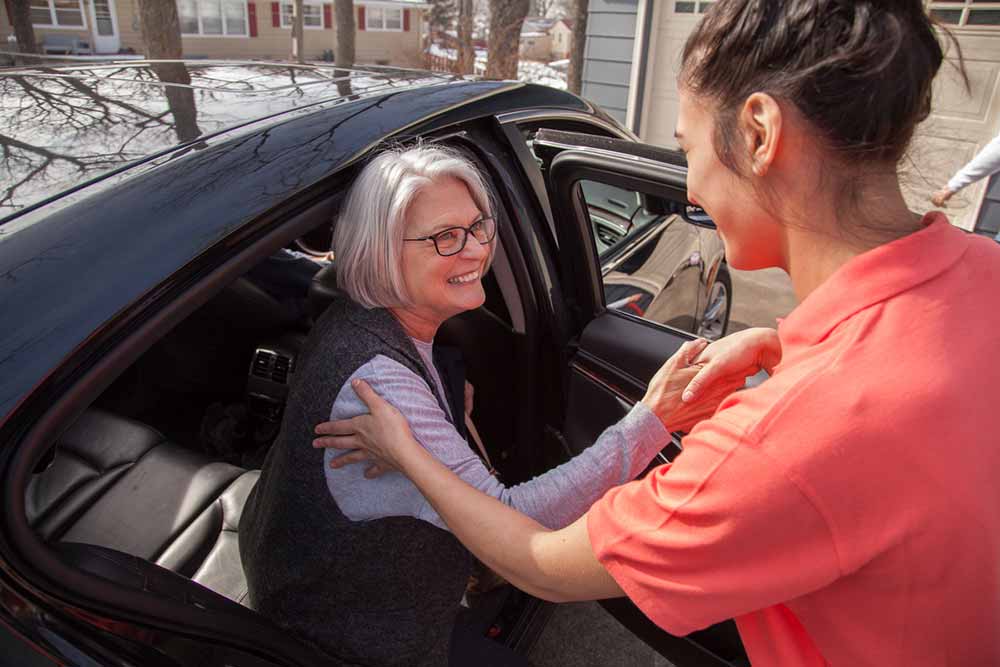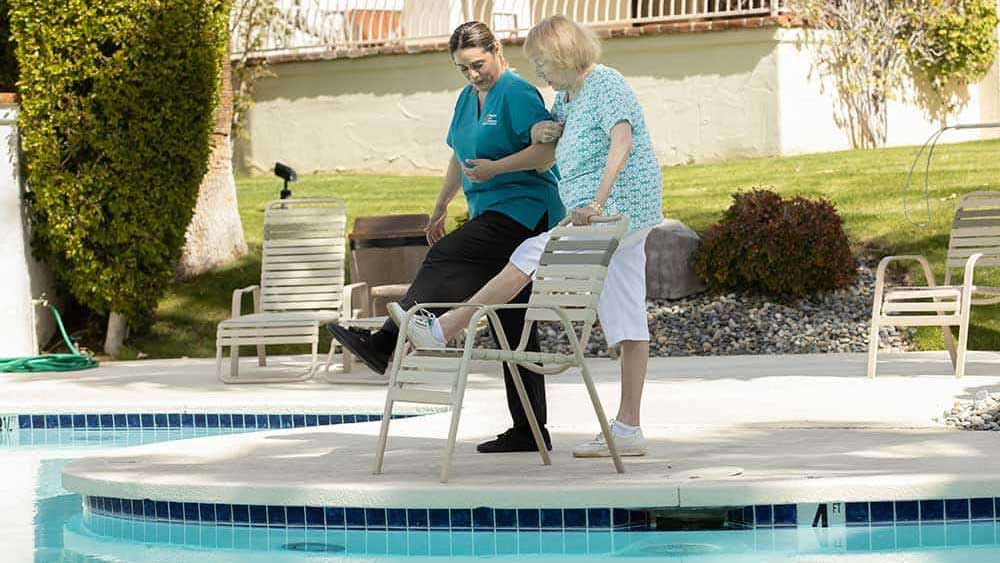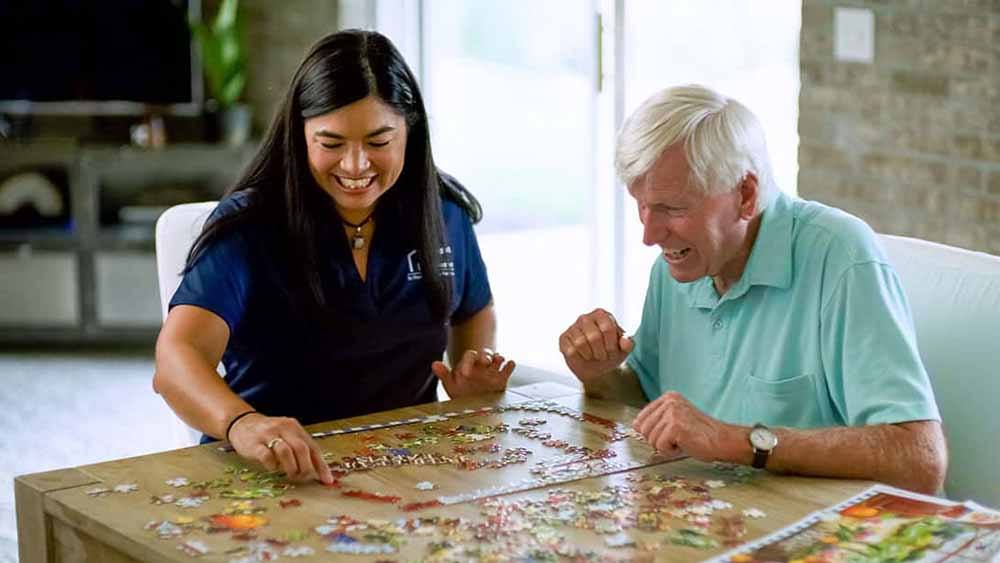

The Need for Senior Transportation is Greater Than Ever
Dad is fully vaccinated against COVID-19, and social distancing restrictions have been relaxed in his city. He’s ready to get out and about, running errands and visiting friends he missed during lockdown. But vision loss and mild memory problems make it unsafe for him to drive. He’s making the best of things by taking the bus to doctor appointments and social opportunities. This is a good option for now—but how long will he be safe on public transportation?
Who knows more about the needs of older adults than the Eldercare Locator, the government helpline seniors and family caregivers can call to find support resources? You might think that assistance with housing, food and health care would be the most pressing needs. But Eldercare Locator experts report that they receive more inquiries about transportation than any other topic. Callers need help getting a ride to medical appointments, the grocery store, and locations where they can remain active in their community.
Polls from the National Aging and Disability Transportation Center (NADTC) confirm that transportation is a top unfilled need for older adults. The NADTC reports, “With more than one in five Americans older than age 65 not driving, demand for transportation is steadily increasing as the boomer population continues to grow. Given that 600,000 people stop driving every year, there is no end to the challenge in sight.”
Getting out and about is so important for senior health and well-being. Many elders are unable to get to exercise opportunities and places where they can socialize. And lack of transportation keeps many from complying with medical recommendations.
“Transportation barriers lead to rescheduled or missed appointments, delayed care, and missed or delayed medication use,” noted a study published in the Journal of Community Health. “These consequences may lead to poorer management of chronic illness and thus poorer health outcomes.”
The spotlight was really on this problem recently when many older adults, who were designated highest priority to get the COVID-19 vaccine and were eager to do so, could not access their shots because they had no way to get to a vaccination site.
When seniors give up the car keys
The changes of aging—vision and hearing loss, reduced manual dexterity, and memory problems, along with the effects of many common health conditions—can make it unsafe for older adults to drive. Unfortunately, some older adults continue to drive themselves where they want to go, even when it isn’t safe for them to do so.
Others rely on family and friends for a ride. These informal caregivers soon feel as if they are serving as their loved one’s transit company! “Caregivers play a pivotal role in helping older adults meet their transportation needs and most are happy to help, but they find providing or arranging rides to be extremely time consuming,” reports the NADTC. They say 39% of caregivers spend five to 10 hours or more each week transporting their loved one, and almost 30% find the task overwhelming.
Some seniors who’ve given up the car are able to walk or bike to nearby places—but there are pitfalls here, as well. Researchers from the University of Tsukuba in Japan who studied older adults who had given up driving found that while these seniors were no longer in danger of causing a car crash, many were still involved in a traffic injury—as pedestrians, or on a bike.
As families face these challenges, some seniors decide to move to a senior living community that offers transportation services. But most prefer to stay in the comfort and familiar surroundings of their own homes. It’s good to know about these senior transportation options:
Public transportation. Many communities have robust public transportation systems, with buses and/or rapid transit such as light rail and subways. Most offer discounted senior fares. However, an NADTC poll found that only 15% of older adults use these services, often because they find it daunting, or fear they’ll be unsafe—a realistic concern, given that many older adults could fall or get lost while navigating public transit. Your local transit agency may offer classes for seniors to familiarize them with the routes they’ll use, how to pay with smart cards, and the availability of special seating and other accommodations for people with disabilities.
Senior transit. When regular public transit is unavailable or inaccessible for a senior with physical or cognitive challenges, check out senior transport services such as scheduled paratransit vans and door-to-door “dial-a-ride” services with driver assistance. (Looking for an opportunity to give back to older adults in the community? Many of these services are staffed by volunteers.)
Taxicabs. One disadvantage of senior transportation services is that they can be relatively inflexible. Passengers usually have to schedule rides in advance, and they might have to wait quite a while for their van to arrive. Taxicabs can be a more convenient option. They can be costly, but your community may offer discount coupons for seniors who qualify.
Ride-hailing services. More older adults these days are using app-driven services such as Uber and Lyft. These are usually less expensive than traditional cab service, though overall somewhat less safe and reliable. A study from the University of Southern California found that most senior users need help and support to learn to use these unfamiliar apps. Luckily, some companies are now offering senior-focused services.
Professional in-home care. If your family uses home care to keep a loved one safe at home, don’t forget that caregivers can provide transportation. Make getting out and about part of your loved one’s routine.
The ride is only the beginning. An Uber driver isn’t going to sit in the doctor’s waiting room with your loved one or assist them to the restroom. And seniors who hesitate to be active in the community can feel empowered by a caregiver’s steadying arm.

This frees up family for other responsibilities, while providing peace of mind for everyone. How reassuring to call Mom and hear that the caregiver took her to her dental appointment, to her faith community, and out to lunch with an old friend!
Talk to a reputable home care agency about your options. It’s important to choose an agency that screens, trains and supervises their caregivers.
With all the transportation options that are available for seniors today, the inability to drive shouldn’t be a barrier to the highest possible quality of life. Learn more about Right at Home’s transportation services for seniors living at home,










